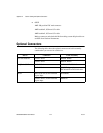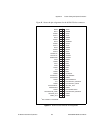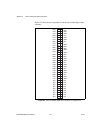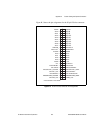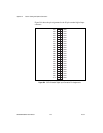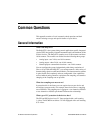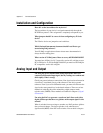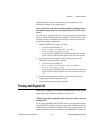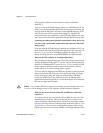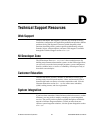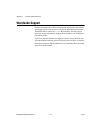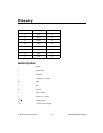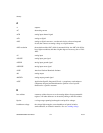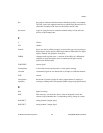
Appendix C Common Questions
© National Instruments Corporation C-3 6023E/6024E/6025E User Manual
deglitching filter to remove some of these glitches, depending on the
frequency and nature of your output signal.
Can I synchronize a one-channel analog input data acquisition with a
one-channel analog output waveform generation on my PCI E Series
device?
Yes. One way to accomplish this is to use the waveform generation timing
pulses to control the analog input data acquisition. To do this, follow steps
1 through 4 below, in addition to the usual steps for data acquisition and
waveform generation configuration.
1. Enable the PFI5 line for output, as follows:
• If you are using NI-DAQ, call
Select_Signal(deviceNumber, ND_PFI_5,
ND_OUT_UPDATE, ND_HIGH_TO_LOW)
.
• If you are using LabVIEW, invoke the Route Signal VI with the
signal name set to PFI5 and the signal source set to AO Update.
2. Set up data acquisition timing so that the timing signal for A/D
conversion comes from PFI5, as follows:
• If you are using NI-DAQ, call
Select_Signal(deviceNumber, ND_IN_CONVERT,
ND_PFI_5, ND_HIGH_TO_LOW)
.
• If you are using LabVIEW, invoke AI Clock Config VI with clock
source code set to PFI pin, high to low, and clock source string set
to 5.
3. Initiate analog input data acquisition, which starts only when the
analog output waveform generation starts.
4. Initiate analog output waveform generation.
Timing and Digital I/O
What types of triggering can be hardware-implemented on my device?
Digital triggering is hardware-supported on every device.
Will the counter/timer applications that I wrote previously work with
the DAQ-STC?
If you are using NI-DAQ with LabVIEW, some of your applications drawn
using the CTR VIs will still run. However, there are many differences in the
counters between the E Series and other devices; the counter numbers are
different, timebase selections are different, and the DAQ-STC counters are




